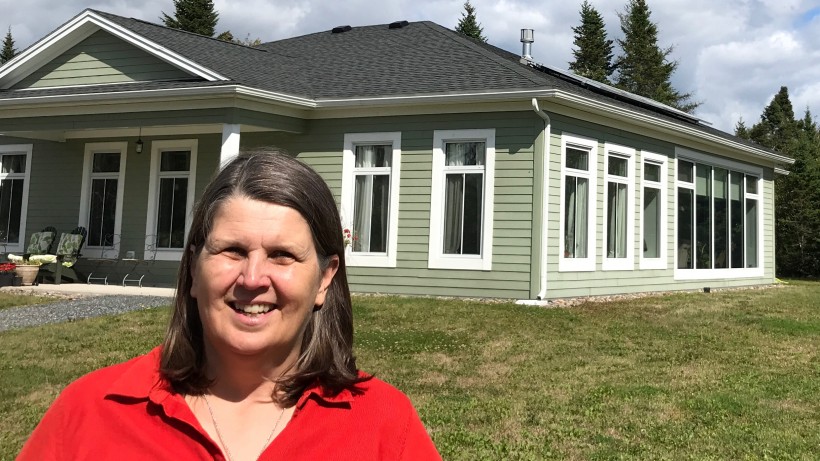A Nova Scotia engineer is aiming to take energy-efficient housing mainstream.
Natalie Leonard is the founder of Passive Design Solutions, which sells ready-made building plans for energy-efficient houses.
The company originally specialized in custom, one-off projects. But with $100,000 of federal funding, Leonard is looking to scale the business and sees standardized designs as a way to expand outside of Nova Scotia.
“It’s a product rather than a service, so it doesn’t matter so much where we are,” she said during an interview. “We don’t have to meet with clients so much, because the customer is doing their own work.”
Her “passive houses” follow a set of standards created by the Passive House Institute—a German nonprofit that researches ways to improve the energy efficiency of residential buildings.
She said that a typical passive house uses about 75 percent less energy than a conventional home. About half the savings are achieved through higher-quality materials, and the other half through better design and building practices, such as reducing uncontrolled airflow into and out of the building.
The client can also apply to have the building itself certified. The process involves a questionnaire of more than 100 pages, sometimes several rounds of re-assessment, and costs about $10,000. Most clients choose to buy solar panels instead.
“For us, energy bills are really the certification,” she said, adding that customers are contractually obligated to share their power bills with Passive Design Solutions for a year after their home is completed. The data is used to track the effectiveness of the designs.
The engineering details of passive houses vary depending on a region’s typical weather conditions, but Leonard’s plans are meant for buyers in “heating dominated climates”. They often use walls built from floor joists, which adds about 10 inches of extra space that can be filled with insulation.
So far, Passive Design Solutions has sold 30 sets of plans, most of them in Nova Scotia. Leonard is spending a portion of the $100,000 her company received from the federal government’s Women Entrepreneurship Fund on expanding into central Canada, and is planning a public relations blitz in the northeastern United States.
Part of the funding has also been spent hiring consultants to help develop a more cohesive online marketing strategy, including video content, which Leonard said has been popular with prospective customers.
“We know that once people become aware of us, they tend to think it’s a good idea,” she said. “We’re very successful in closing leads.”
The company’s five full-time employees and one part-time employee all work remotely in locations ranging from downtown Halifax to Germany. In the next year, Leonard plans to hire two more staff to help her with the design process, and possibly a salesperson.










